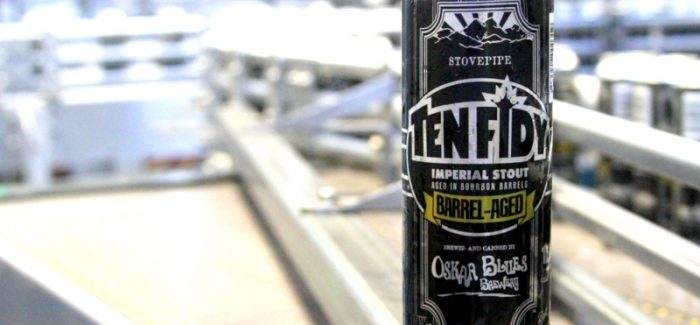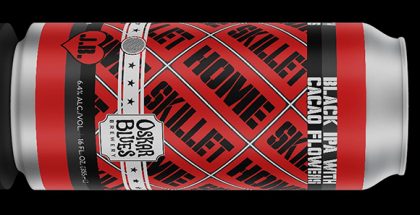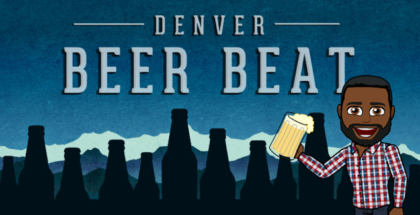Niche or Necessity? Why 19.2 oz Cans Continue to Gain Momentum
Look in the hand of any avid craft beer fan and you’ll most likely find a can of glistening beer. Right now, the shift towards aluminum primarily revolves around the traditional 12oz and tallboy formats, but that trend is evolving as consumers continue to voice their beer opinions through their wallets. The next frontier for cans is one that has been on-shelves for some time. Unsurprisingly pioneered by Oskar Blues back in 2012, the 19.2oz can, often called a stovepipe, is a behemoth of beer, giving drinkers over 1.5 standard servings of beer. It’s not a format for everyday use, but several brewers across the nation are finding interesting niches for the big can format.
We asked them about the growing trend and if they think the can is here to stay.
More Cans, More Venues, More Sales
Offering consumers variety, both in beer and in packaging, has become a winning formula for many of the larger brewers across the U.S. The 19.2oz can option, ideal for a single-serve, grab-and-go type of drinker, offers breweries in-roads into new retail formats, like music venues and gas stations. These types of places cater to a unique audience that is only looking for one serving – albeit a large one – as they enjoy a concert or take the train home. “The format opened the door to a different side of the cooler for us, in addition to new opportunities in gas and convenience stores with limited space,” said Doug Veliky, CFO of Chicago-based Revolution Brewing.
While it’s common to see a tall can of Anti-Hero on any train departing Union Station, Oskar Blues found it’s stovepipe niche distributing the likes of Dale’s Pale Ale to large music venues and local baseball parks. “The 19.2oz. was a great solution for venues where you have paid for entertainment and don’t want to have to stand in line to get additional beers,” said Jeremy Rudolf, Oskar Blues’ Primary Innovation Guy. “In a venue like [Red Rocks] where the room can be sold out, the can is a better vessel while you are shoulder to shoulder with an energetic crowd, by the time you get back to your seat the can still hold beer where a plastic cup spills everywhere.” Taking it a step further, Colorado’s New Belgium was recently named the official craft brewery of Red Rocks, giving patrons exclusive access to the Stage Rock Colorado Ale available in stovepipe cans.
Giving craft beer consumers greater variety in their canning options when out at a baseball game or concert makes a lot of sense for both brewer and beer fan alike. The stovepipe offers drinkers an extended drinking window so that more time is spent soaking up the entertainment than standing in line trying to order the next one. Rudolf also notes that the stovepipe fills the large sales gap left behind in the wake of the glass bombers decline as consumers look for larger servings contained in a single unit.
Along with giving brewers more access to different purchasing locations and drinkers, the large format also offers brewers a leg up when it comes to competing with the big boys of AB InBev who have traditionally dominated the taps and store shelves of ballparks and convenience stores. “This package type allows craft to participate in this competitive single-serve business along the side of premium lagers, said Greg Merideth, Lagunitas’ Senior VP of Sales.
“Consumers want selection in the C store channel just as we have seen in grocery and on-premise models.”
Manufacturing Evolution
With any new format, brewers must make the decision on how they need to tweak their canning lines to adjust. For some, like Dogfish Head, the switch to 19.2 was as simple as flipping a switch. Neal Stewart, VP of Marketing at Dogfish Head, notes that their state-of-the-art canning line came equipped with the ability to fill 12, 16 and 19.2oz cans with the likes of Seaquench Ale and 60 Minute IPA. Doug Veliky from Revolution had a similar sentiment, noting that installing their million dollar canning line in 2017 gave them added flexibility to package cans at “various heights for the first time.” That said, Veliky notes that the primary adjustment for Revolution came on the packaging side of things, as the stovepipe cans require a unique 12-pack carton compared to the traditional 6-pack trays and paktechs (6-pack holders).
For the international operation that is Lagunitas, the shift to 19.2 took a bit more time to figure out given their huge brewing capacity. Along with prepping the canning line, Greg Meredith notes that their canning team had to learn how to modify all of the equipment, like the packer and filler, to adjust to the taller format. After that was sorted out, their massive canning line hummed once again.
https://www.instagram.com/p/Bj74sqHHmas/?hl=en&taken-by=lagunitasbeer
Similarly, Oskar Blues has the art of packaging the larger format down to suds-filled science. “Our can line was spec’d and installed with 19.2oz. cans in mind so we were able to minimize changeover from filling 12oz., 16oz. or 19.2oz. cans. The changeover typically takes less than an hour for our skilled can line team,” said Rudolf.
Positive Momentum
In the scheme of things, the popularity of the stovepipe represents a small amount of total sales – but it’s still trending in the right direction. Introduced over five years ago, many of the breweries I talked to agreed that the larger, single-serve format had better sales on its horizons. Revolution’s Doug Veliky notes that response to Anti-Hero in 19.2oz cans has been “very positive,” as Chicago beer fans “welcome the ability to buy a cold Anti-Hero on-the-go.”
Neal Stewart from Dogfish Head went a step farther, calling the projection of their stovepipe cans as “very positive,” mostly because its a great option for a multiple of active venues like beaches and ballparks. Rudolf from Oskar Blues echoed that sentiment, noting that sales of their stovepipe cans were “going off,” due to its success at large concert venues like Red Rocks and the House of Blues.
And while the breweries I talked to were in agreement about its positive momentum, they also agreed that its growth may be a slower burn than the dynamic sales increases of 12oz cans. The reason? It takes a major investment to update your canning line to work with the larger format. “We believe the consumer is ready, but the manufacturing side of things can be a roadblock if you have not planned ahead and prepared to run the cans in advance,” said Rudolf.
Putting the onus on breweries to invest in newer packaging formats amid the myriad of other financial responsibilities seems like a low priority, but that could change if more and more breweries start offering the format. “Competition is good, said Neal Stewart. “The more craft breweries that offer this pack size, the better because it will convince retailers to create space on the shelf specifically for the 19.2oz can.”
Are stovepipe cans just a blip or a sign of bigger things to come? For breweries like Oskar Blues, the commitment to the stovepipe can is clear. Along with their nationally known brands like Dale’s Pale Ale, they’ve also seen success serving a variety of their barrel-aged beers, like Barrel Aged Ten FIDY Imperial Stout, in the larger format. With barrel-aged beers coming to cans more and more these days, it will be interesting to see if the consumer’s love of the high-octane brews might lead to increased demand for the likes of barrel-aged stouts served in 19.2oz cans.. I wouldn’t mind taking a large can of my favorite barrel-aged beer to my favorite couch following a long Thanksgiving meal. Cheers!
Feature image courtesy of Oskar Blues








Submit a Comment